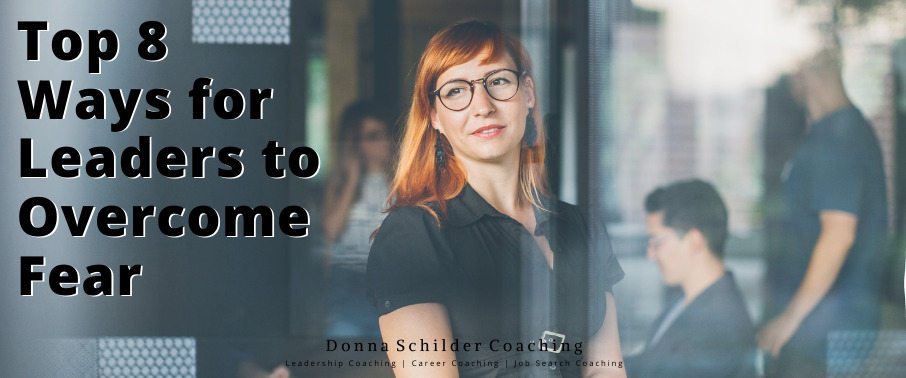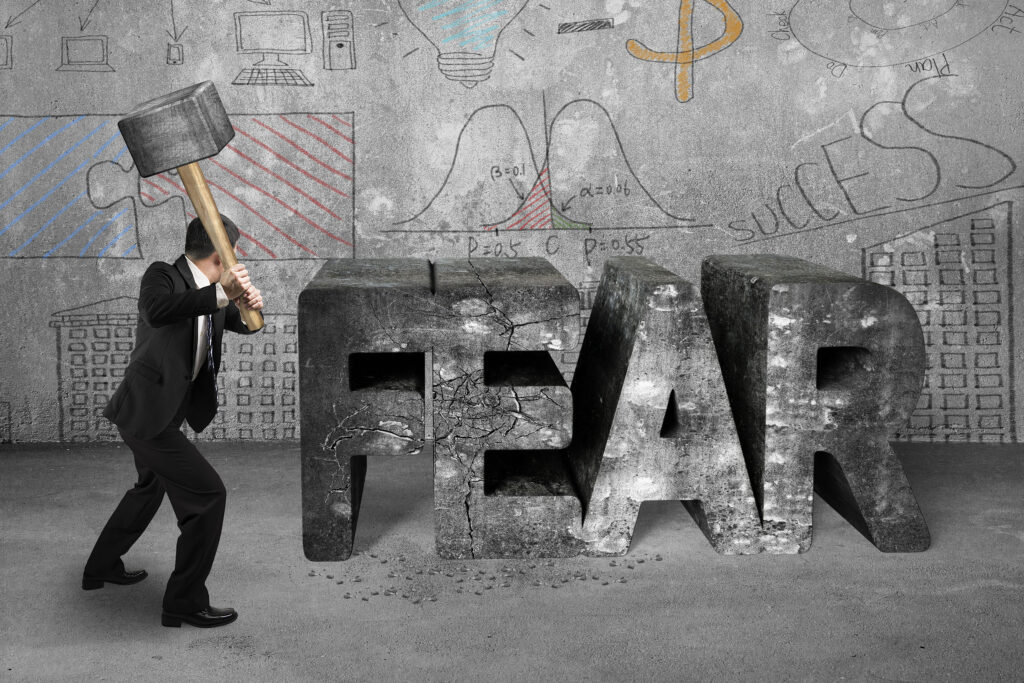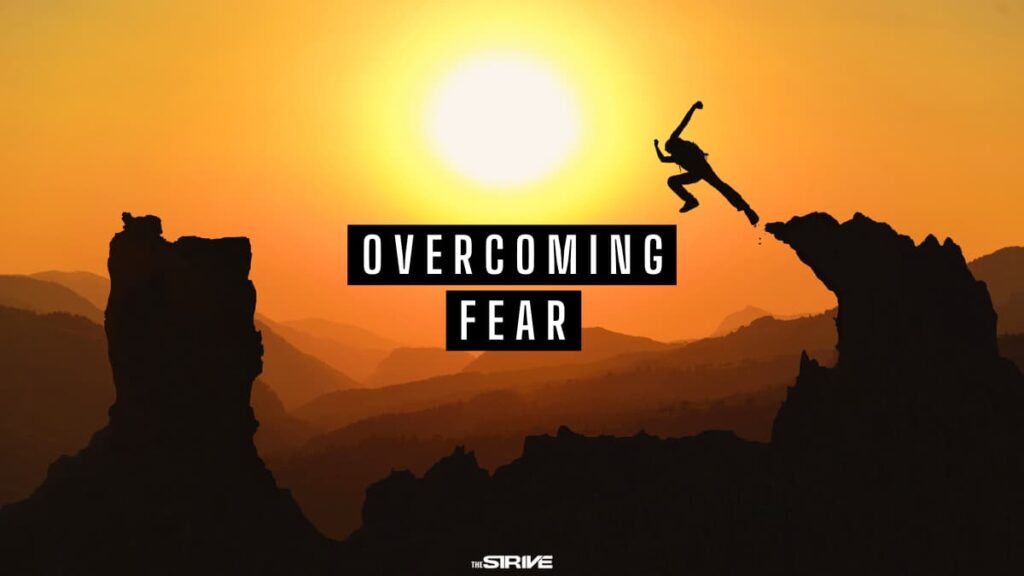Have you ever felt a sudden surge of fear ripple through your body as you approach a towering jump while riding a horse? Fear is a common emotion experienced by riders of all levels, and overcoming it is crucial for growth and success in horseback riding. In this article, we will explore strategies from professional trainers that can help you conquer your fears and become a more confident rider. Whether it’s tackling a challenging obstacle or simply mounting a horse for the first time, these techniques will empower you to face your fears head-on and enjoy a fulfilling equestrian journey.
Overcoming Fear: Strategies from Professional Trainers
Fear is a natural emotion that everyone experiences at some point in their lives. When it comes to horseback riding, fear can be a significant barrier that prevents riders from fully enjoying their experience. However, with the right strategies and techniques, it is possible to overcome fear and build confidence in the saddle. In this article, we will explore various strategies from professional trainers that can help riders conquer their fears and develop a stronger relationship with their horses.
Understanding the Nature of Fear
Before diving into strategies for overcoming fear, it is essential to understand the nature of fear itself. Fear is an emotional response triggered by a perceived threat or danger. It can manifest in various forms, including anxiety, nervousness, and even panic. Different types of fear can arise in horseback riding, such as fear of falling, fear of losing control, or fear of getting injured.
Understanding the specific type of fear you are facing is crucial as it allows you to identify the root cause and address it more effectively. Common causes of fear in horseback riding can include previous negative experiences, lack of self-confidence, or a general fear of the unknown.
Additionally, fear can have a significant impact on performance. The fight-or-flight response, a physiological reaction triggered by fear, can affect a rider’s ability to concentrate, make quick decisions, and maintain proper body posture while riding. Recognizing how fear influences performance is essential when developing strategies for overcoming it.
Psychological Strategies for Overcoming Fear
-
Cognitive Restructuring: Cognitive restructuring involves identifying and challenging negative thoughts or beliefs related to horseback riding. By replacing these negative thoughts with more positive and realistic ones, riders can reframe their mindset and reduce anxiety.
-
Mindfulness and Meditation: Mindfulness and meditation practices can help riders become more present and focused in the moment. By training the mind to stay calm and aware, riders can better manage fear and anxiety during their riding sessions.
-
Positive Self-Talk: Positive self-talk involves using affirmations and encouraging statements to counteract negative thoughts. By consciously replacing self-doubt with self-belief, riders can boost their confidence and overcome fear.
-
Identifying and Challenging Negative Thoughts: It is crucial to recognize and challenge negative thoughts that contribute to fear. By questioning the validity of these thoughts and replacing them with more positive and rational ones, riders can reduce anxiety and increase self-confidence.
-
Setting Realistic Goals: Setting realistic goals is an effective way to gradually overcome fear. By breaking down riding activities into manageable steps and celebrating small victories along the way, riders can build confidence and progressively tackle their fears.
-
Developing a Fear Hierarchy: A fear hierarchy is a tool that allows riders to prioritize their fears and gradually expose themselves to increasingly challenging situations. By starting with less intimidating tasks and gradually working up the ladder, riders can build confidence and overcome their fears in a structured manner.
-
Utilizing Relaxation Techniques: Incorporating relaxation techniques, such as deep breathing and progressive muscle relaxation, can help riders manage anxiety and promote a sense of calmness and control.
-
Practicing Desensitization: Desensitization involves gradually exposing riders to their fears in a controlled and supportive environment. By repeatedly encountering fear-inducing stimuli, riders can become more comfortable and desensitized to these situations over time.

Physical Strategies for Overcoming Fear
-
Physical Conditioning: Engaging in regular physical conditioning exercises can improve overall fitness and strength, which can contribute to a rider’s sense of stability and control.
-
Improving Balance and Coordination: Working on exercises that enhance balance and coordination, both on and off the horse, can help riders feel more secure and confident in the saddle.
-
Building Core Strength: Strengthening the core muscles is crucial for maintaining proper riding posture and stability. Exercises such as planks, bridges, and yoga can help develop a strong core.
-
Developing Effective Riding Posture: Good posture is essential for balance and control while riding. Practicing proper alignment and posture both on and off the horse can increase confidence and diminish fear.
-
Improving Riding Skills and Technique: Investing time in improving riding skills and technique can boost confidence and alleviate fear. Taking riding lessons from experienced trainers can provide valuable guidance and support in this aspect.
-
Implementing Safety Measures: Using appropriate safety equipment, such as helmets and protective vests, can provide riders with a sense of security and reduce fear of potential injuries.
-
Using Supportive Equipment: Utilizing supportive equipment, such as well-fitted saddles or anti-slip pads, can enhance a rider’s stability and confidence, reducing fear-related anxieties.
Breathing Techniques for Fear Management
-
Diaphragmatic Breathing: Diaphragmatic breathing involves deep inhalation through the nose and a long exhale through the mouth. This technique helps activate the body’s relaxation response, reducing anxiety and promoting calmness.
-
Box Breathing: Box breathing is a technique that involves inhaling, holding the breath, exhaling, and pausing, each for an equal count of seconds. This technique can help regulate breathing, induce relaxation, and alleviate fear.
-
4-7-8 Breathing Technique: The 4-7-8 breathing technique involves inhaling through the nose for a count of 4, holding the breath for a count of 7, and exhaling through the mouth for a count of 8. This method can induce a deep state of relaxation and reduce anxiety.
-
Alternate Nostril Breathing: Alternate nostril breathing is a breathing technique that balances the body’s energy and promotes calmness. By alternating between inhaling and exhaling through the left and right nostrils, this technique can help alleviate fear and anxiety.
-
Breath Awareness and Control: Developing breath awareness and consciously controlling breathing patterns can bring focus and calmness to riders in fearful situations. By becoming aware of breath and implementing slow, controlled breathing, riders can manage anxiety and regain control.

Visualization and Positive Affirmations
-
Guided Imagery: Guided imagery involves imagining riding scenarios or experiences in vivid detail. By incorporating all senses and positive emotions into these mental images, riders can create a powerful tool to overcome fear and enhance confidence.
-
Creating Mental Imagery: Creating mental imagery involves mentally rehearsing successful riding experiences before they happen. By visualizing positive outcomes and focusing on sensations of confidence and joy, riders can reduce fear and reinforce positive feelings.
-
Visualizing Successful Riding Experiences: Visualizing successful riding experiences can help riders build confidence by reaffirming their abilities and creating positive expectations for future rides.
-
Using Positive Affirmations: Positive affirmations are statements that reinforce confidence and self-belief. By repeatedly affirming positive qualities or capabilities, riders can harness the power of positive thinking and overcome fear.
-
Building a Mental Toolbox for Fear: Creating a mental toolbox filled with positive images, affirmations, and memories of successful rides can serve as a powerful resource to combat fear whenever it arises.
Gradual Exposure to Fearful Situations
-
Understanding Exposure Therapy: Exposure therapy involves gradually exposing oneself to fear-inducing situations while providing a supportive and controlled environment. This technique allows riders to confront their fears in manageable doses, gradually building confidence.
-
Creating a Fear Ladder: Creating a fear ladder involves generating a hierarchical list of fear-inducing scenarios, starting from the least challenging to the most intimidating. Working through each step of the ladder systematically allows riders to acclimate to fear and conquer it progressively.
-
Taking Small Steps: Incrementally challenging oneself by taking small steps towards overcoming fear can be highly effective. By gradually increasing the difficulty of riding tasks, riders can build confidence and reduce fear gradually.
-
Implementing Systematic Desensitization: Systematic desensitization involves combining relaxation techniques with gradually increasing exposure to fear-inducing situations. By pairing controlled exposure with a relaxed state, riders can reframe their response to fear and diminish its impact.
-
Managing Progress and Setbacks: Progress in overcoming fear can be accompanied by setbacks. It is essential to acknowledge and accept setbacks as part of the learning process. By maintaining an open mindset and seeking support, riders can overcome setbacks and continue progressing in their fear management journey.

Building Trust and Confidence in Yourself
-
Identifying and Focusing on Strengths: Identifying and acknowledging personal strengths and abilities is crucial for building confidence. By emphasizing these strengths, riders can boost their self-belief and overcome fear.
-
Reflecting on Past Accomplishments: Reflecting on past accomplishments and successful riding experiences can reinforce confidence and provide reassurance when facing fear. By reminding oneself of what they have already achieved, riders can approach challenges with a positive mindset.
-
Celebrating Small Victories: Celebrating small victories, no matter how seemingly insignificant, can be a powerful motivator. Acknowledging and rewarding progress helps build confidence and provides a sense of achievement.
-
Surrounding Yourself with Supportive People: Surrounding yourself with supportive friends, family, or fellow riders creates a positive and encouraging environment. Having people who believe in you and provide emotional support can boost your confidence and help you overcome fear.
-
Believing in Your Abilities: Having faith in your abilities and believing in your potential is essential for overcoming fear. By cultivating self-belief and trusting your skills as a rider, you can face fear with a sense of determination and resilience.
The Importance of Proper Preparation
-
Setting Realistic Expectations: Setting realistic expectations for your riding journey is crucial for managing fear. Recognize that progress takes time and that setbacks are a natural part of the learning process. Setting achievable goals and measuring progress accordingly can help you stay motivated and focused.
-
Learning about Horse Behavior: Understanding horse behavior and communication is fundamental for establishing a strong bond with your horse and feeling more secure in the saddle. Educate yourself about their instincts, body language, and reactions to different situations to better anticipate and handle potential challenges.
-
Developing Safety Protocols: Establishing safety protocols, such as checking equipment before every ride, understanding emergency procedures, and practicing safe riding habits, can provide a sense of security and control. By prioritizing safety, you can alleviate fear and focus on enjoying the ride.
-
Preparing for Emergency Situations: While it is essential to remain positive and optimistic, preparing for emergency situations can provide peace of mind. Familiarize yourself with basic first aid techniques, ensure you have a phone or a communication device with you during rides, and inform someone of your riding plans.
-
Taking Lessons from Experienced Trainers: Taking lessons from experienced trainers can provide valuable guidance and mentorship. Professional trainers can help you develop proper riding techniques, build confidence, and address specific fears or concerns.

Techniques for Managing Anxiety
-
Identifying Triggers: Recognizing the specific triggers that heighten anxiety is essential for effective anxiety management. Identifying the thoughts, situations, or sensations that precede anxiety can help you develop targeted strategies to alleviate it.
-
Implementing Relaxation Exercises: Engaging in relaxation exercises, such as deep breathing, progressive muscle relaxation, or guided visualization, can significantly reduce anxiety and promote a sense of calmness and control.
-
Practicing Mindfulness: Mindfulness involves focusing on the present moment and accepting thoughts and feelings without judgment. By practicing mindfulness, riders can reduce anxiety and enhance their overall riding experience.
-
Engaging in Stress-Relieving Activities: Engaging in stress-relieving activities outside of horseback riding can help manage anxiety. Activities such as yoga, meditation, or engaging hobbies can promote relaxation and improve overall well-being.
-
Utilizing Grounding Techniques: Grounding techniques involve bringing attention to the present moment by focusing on sensory experiences. By redirecting attention to physical sensations, riders can reduce anxiety and regain control.
Seeking Professional Help and Support
-
Consulting with a Certified Riding Instructor: Certified riding instructors are trained professionals who can provide personalized guidance and support tailored to your specific needs. Seeking their expertise can help you overcome fear and build confidence.
-
Working with a Sports Psychologist: Sports psychologists specialize in helping athletes overcome mental barriers, including fear and anxiety. Consulting with a sports psychologist can provide valuable tools and techniques to manage fear effectively.
-
Joining Supportive Riding Communities: Joining supportive riding communities or groups can create a sense of belonging and provide a safe space to discuss and share experiences with like-minded individuals. It offers an opportunity to learn from others and gain additional support.
-
Attending Fear Management Workshops: Fear management workshops provide a structured environment where riders can learn and practice various strategies for overcoming fear. These workshops often include group discussions, demonstrations, and hands-on activities to help riders address their fears.
-
Participating in Group Therapy: Group therapy sessions focused on fear and anxiety management can provide a supportive and understanding environment to share experiences and learn from others facing similar challenges. Participating in group therapy can offer valuable insights and coping strategies.
By implementing these strategies and seeking the help you need, you can conquer your fears and develop a more confident and enjoyable experience while horseback riding. Remember, fear is a normal emotion, and it is possible to overcome it with time, patience, and the right tools. Embrace the journey, be kind to yourself, and celebrate each step forward. Happy riding!

